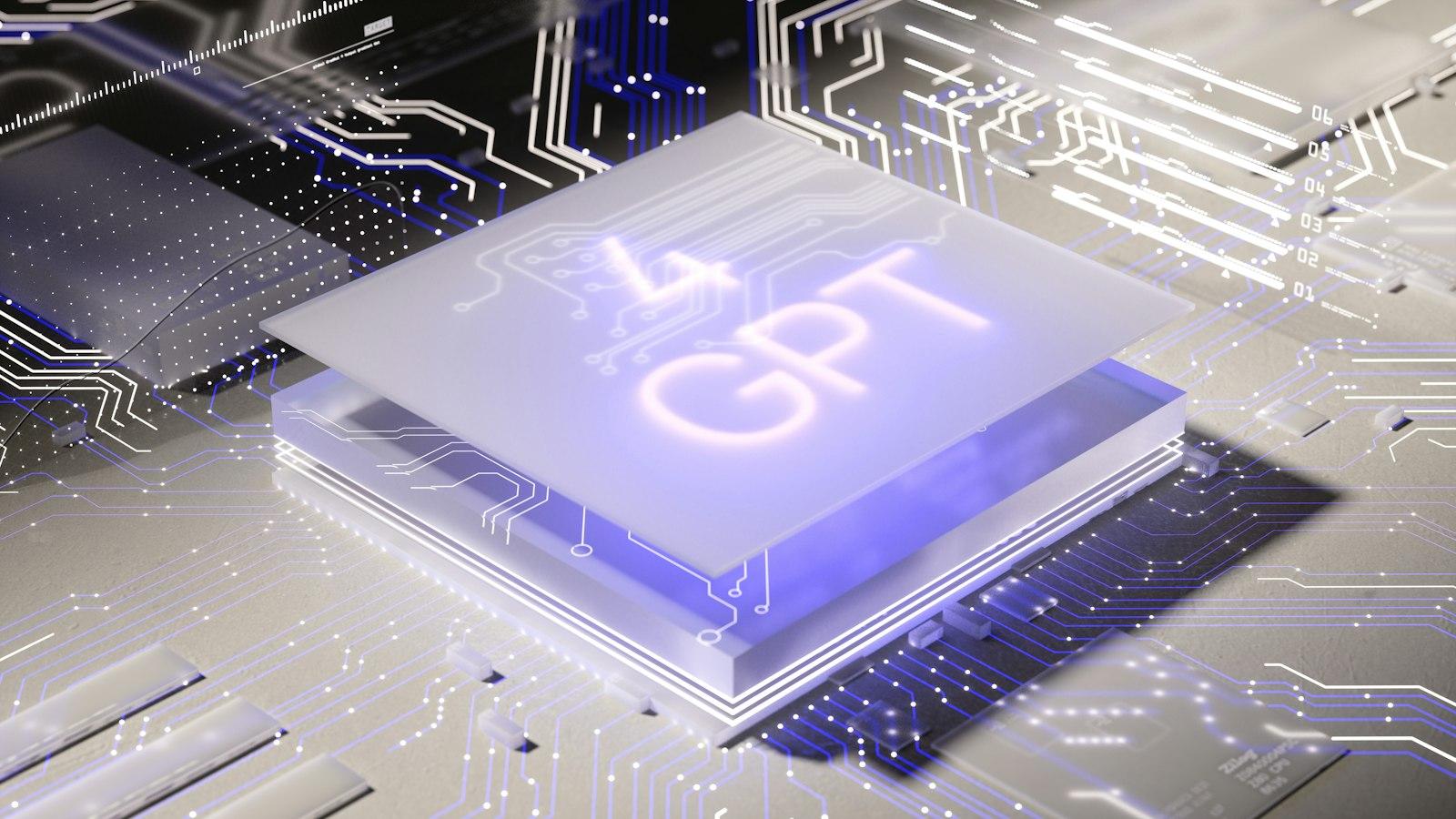Unleashing the untamed power of ChatGPT, the language model that has captivated the world with its astonishing ability to generate human-like text, comes at a hefty cost—energy consumption. As this insatiable hunger for energy threatens to push the limits of today’s computing capabilities, a revolutionary solution looms on the horizon: the potential birth of a GPU revolution. Brace yourselves as we delve into the intriguing tale of how ChatGPT’s voracious energy demands might just pave the way for an unprecedented transformation in the world of graphics processing units.
ChatGPT’s Energy Consumption and Implications for GPU Revolution
As artificial intelligence continues to advance, the demand for powerful computing systems has grown exponentially. ChatGPT, OpenAI’s language model, is no exception. However, its insatiable hunger for energy has raised concerns about its environmental impact. The immense computational requirements of running ChatGPT on GPUs have sparked discussions about the need for more energy-efficient hardware, potentially paving the way for a GPU revolution.
The energy consumption of ChatGPT and its implications:
1. **Skyrocketing power usage**: ChatGPT’s complex algorithms and extensive training requirements result in staggering energy consumption rates, requiring significant electricity resources to fuel its operation.
2. **Environmental concerns**: The substantial energy footprint of ChatGPT raises environmental concerns, as it contributes to carbon emissions and perpetuates reliance on non-renewable energy sources.
3. **Energy efficiency challenges**: The current energy consumption of ChatGPT highlights the urgency in developing more energy-efficient GPUs and computing systems to curb power usage and minimize the ecological impact.
4. **GPU Revolution**: The need to optimize energy consumption in AI models like ChatGPT could drive a GPU revolution, with researchers and technology companies racing to develop more efficient and environmentally friendly hardware solutions.
5. **The quest for sustainability**: Mitigating ChatGPT’s energy consumption is not only essential for environmental preservation but also crucial for ensuring scalability and widespread adoption of AI technologies without straining power grids.

Exploring the Energy Requirements of ChatGPT and Its Impact on GPU Technology
As the world becomes increasingly reliant on artificial intelligence (AI) models, like OpenAI’s ChatGPT, the demand for computing power continues to rise. However, one aspect that often gets overlooked is the massive energy consumption required to run these powerful models. ChatGPT is no exception; its insatiable hunger for energy has the potential to revolutionize GPU technology.
<p>GPU (Graphics Processing Unit) technology has been a key enabler for AI applications due to its parallel processing capabilities. The computation-heavy tasks of AI models, such as language translation and text completion, rely heavily on GPUs to accelerate the complex calculations. With ChatGPT's energy requirements pushing the limits of current GPU technologies, a new wave of advancements in energy efficiency is expected to emerge. This could lead to the development of more power-efficient GPUs that not only meet the demands of AI models but also reduce their environmental impact, helping to pave the way for a more sustainable AI future.</p>
Unpacking the Energy Efficiency Challenges of ChatGPT and the Potential for a GPU Revolution
The energy efficiency challenges faced by ChatGPT have sparked discussions around the potential for a GPU revolution. As an advanced language model, ChatGPT relies heavily on computational power and thus consumes a significant amount of energy. This has raised concerns about the environmental impact and sustainability of using models like ChatGPT at scale. However, this challenge presents an opportunity to explore the innovative use of GPUs (Graphics Processing Units) in order to revolutionize energy efficiency in AI systems.
One potential solution lies in leveraging GPUs, which are known for their ability to handle parallel processing tasks more efficiently than traditional CPUs. By harnessing the power of GPUs, researchers can explore ways to optimize energy consumption while maintaining the performance and capabilities of models like ChatGPT. Additionally, advancements in GPU technology, such as the development of more energy-efficient GPUs with better thermal management, could further enhance the efficiency of AI systems.

Recommendations for Addressing ChatGPT’s Energy Hunger and Harnessing a GPU Revolution
The staggering energy consumption of ChatGPT has raised concerns and sparked conversations about the environmental impact of artificial intelligence. However, rather than solely focusing on the problem, we can explore potential solutions to address ChatGPT’s energy hunger while leveraging the opportunity to drive a GPU revolution. Here are some recommendations:
1. Optimize model architecture:
Researchers can devise innovative ways to reduce ChatGPT’s energy consumption without compromising its performance. Exploring lightweight model architectures and developing efficient algorithms can greatly contribute to mitigating its energy hunger. By streamlining the neural network, unnecessary computations can be minimized, resulting in significant energy savings.
2. Integrate specialized hardware:
The utilization of specialized hardware, such as Application Specific Integrated Circuits (ASICs) or Field Programmable Gate Arrays (FPGAs), can significantly enhance the energy efficiency of ChatGPT. These chips can be purpose-built for AI tasks, ensuring optimal performance while consuming less power. By harnessing the power of specialized hardware, we can strike a balance between ChatGPT’s computational requirements and energy consumption.
In the vast universe of artificial intelligence, where ideas converge and innovate, a new promising force has emerged. ChatGPT, an AI language model developed by OpenAI, has taken the world by storm, captivating minds with its astounding ability to generate human-like text. However, hidden behind its brilliance lies a formidable appetite for energy. As we delve further into its voracious hunger, we begin to draw parallels between ChatGPT’s insatiable power requirements and the dawn of a potential GPU revolution.
Unveiling the true face of this energy guzzler, we find that ChatGPT thrives on gargantuan computational resources, particularly GPUs (Graphics Processing Units). These robust processing units have long been the unsung heroes of computer graphics, but could now be igniting a technological metamorphosis. With a voracious appetite for energy and a thirst for computations, ChatGPT has unearthed a hidden potential within GPUs, thrusting them into the spotlight as the key to unlocking a new era of AI prowess.
Fueling this potential revolution is the realization that GPUs offer an unmatched ability to handle the enormous computational demands posed by ChatGPT’s intricate architecture. As this AI giant devours exabytes of data, GPUs, once relegated to niche tasks, emerge as the perfect accompaniment to its insatiable hunger for processing power. Their parallel processing capabilities and immense memory bandwidth become the missing puzzle piece, propelling the development and evolution of AI systems.
While the ramifications of ChatGPT’s energy consumption might raise concerns, it simultaneously births a newfound thirst for efficiency and technological advancement. As scientists scramble to address the AI energy crisis, researchers and engineers around the globe unite to birth a GPU revolution that not only sustains ChatGPT’s monstrous hunger but transforms the landscape of AI as we know it.
The emergence of energy-efficient GPUs, designed explicitly to satiate ChatGPT’s demands, promises a future where AI systems can thrive without compromising our already fragile environment. With breakthroughs in hardware design and computational architectures, the hurdles that once impeded efficiency and sustainability are systematically dismantled, paving the way for a greener and more conscientious AI landscape.
As we part ways with the tale of ChatGPT and its energy needs, we are left exhilarated by the potential of a GPU revolution. United by a common cause, it is humanity’s collective ingenuity and desire for progress that will guide us towards a future where AI innovation and sustainability beautifully coexist. And so, armed with boundless creativity and an unyielding resolve, we embark on a journey where ChatGPT’s appetite for energy transforms into a catalyst for a new era of intelligent technologies, helping us shape a world where AI is not just powerful, but responsible.


